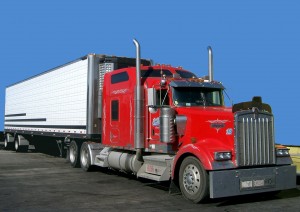10 Ways to Maximize Fuel Efficiency in Older Trucks
When you’re managing a fleet, every measure you take towards reducing fuel consumption is going to pay off. Trying to maintain fuel efficiency in older trucks adds more difficulty to an already tremendous need. Here are 10 tips, of varying expense and difficulty, which will help you save on your fuel costs.
 Collect your excess oil. Inside the upper intake manifold, you can capture excess oil that is misted as your engine operates by using an oil catch. That removes it from the burn inside the engine’s cylinders, leaving you with an elemental mix of gasoline and oxygen that leads to cleaner combustion and greater fuel efficiency.
Collect your excess oil. Inside the upper intake manifold, you can capture excess oil that is misted as your engine operates by using an oil catch. That removes it from the burn inside the engine’s cylinders, leaving you with an elemental mix of gasoline and oxygen that leads to cleaner combustion and greater fuel efficiency.- Pour in fuel injection cleaner. This will keep valves lubricated and help maintain the caliber of your engines.
- Check your spark plugs at regular intervals. If they’ve changed color, then your engine’s fuel burn is off. This color change could indicate the O2 sensor is in need of help. Iridium spark plugs should be changed after 60,000 miles. Copper plugs after 7,000 miles.
- Upgrade your exhaust system. Your truck exhaust systems are going to get rust eaten and corroded over time, which will cost you in efficiency. New turndown and spout kits can let your engine get the air that it needs, as can new mufflers, both of which are relatively cheap to replace. The exhaust may be your first stop to check after you’ve already had a tune-up that didn’t result in expected efficiency.
- Maintain electrical grounds. If you get thicker wires installed in your vehicles, you’ll know that you’re getting accurate data from sensors.
- Get fuel efficient tires and maintain their pressure. If you’re running tires at an underfilled tire pressure, you’re losing percentage points of fuel efficiency every time you drive. Multiply that by the vehicles in your fleet and you have an opportunity to save significant money once the tires are pressurised.
- Suspension. When it’s at the limit, you’re over loading the tires, wearing them out and sucking out your fuel. What you can do is emplace adjustable air springs, which increase how heavy a load you can carry.
- Transmission trouble. Once your vehicle’s transmission is under the knife, get the mechanic to firm the shifts and check the rear axle gear ratio, adjusting it to a level that is commensurate with how much weight you carry. You want a smooth and seamless shift that will keep the gears in place and reduce erosion of the metal over time. You can also get a shift kit.
- Think aerodynamic. You’ll want to remove anything on the truck that isn’t pulling its own weight. Some racks and bumpers can suck your gas mileage for no reason, so get rid of them. Make sure you load smartly, like a mover, and place weight from the cab and back. Numerous aerodynamic mods are available to smooth the way for your fleet, such as truck caps and tonneau covers for open bed pick-ups.
If you go for vehicle mod, you can also end up with one of the most interesting fleets on the road. And finally, consider training your drivers in a simulator, which can help them perfect economical driving that will save you money. - Get a fleet fuel spend card. They can only be used for gasoline, which means your truckers won’t waste a gas budget on Chips Ahoy and Cherry Slurpees.
Just implement a few of these tricks, and you’ll find your costs noticeably drop.
